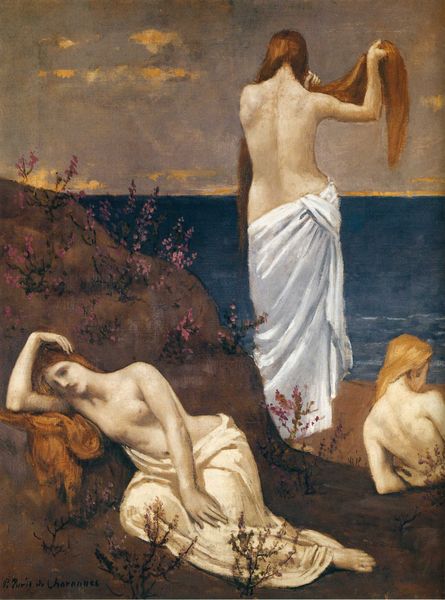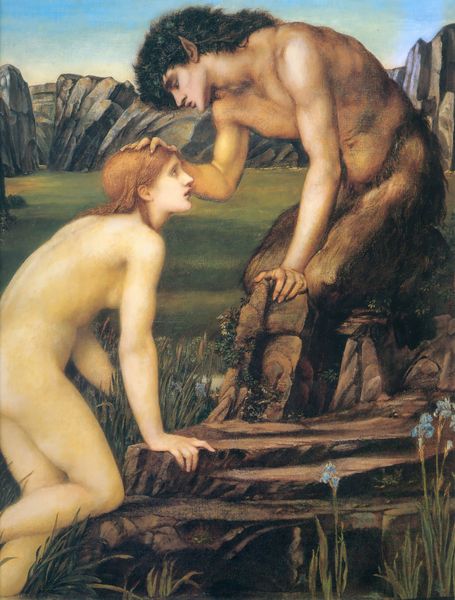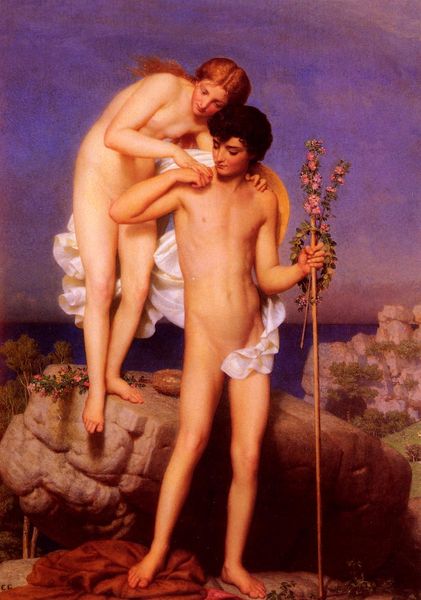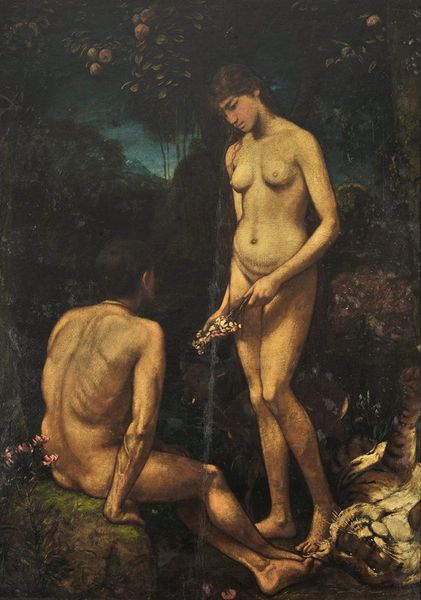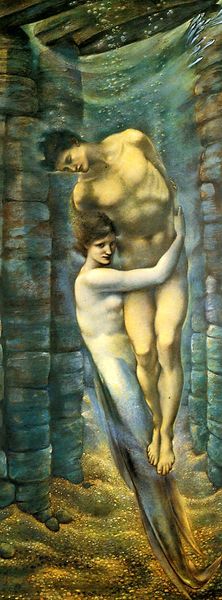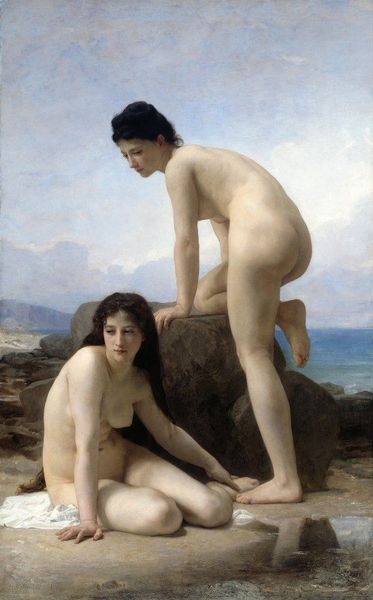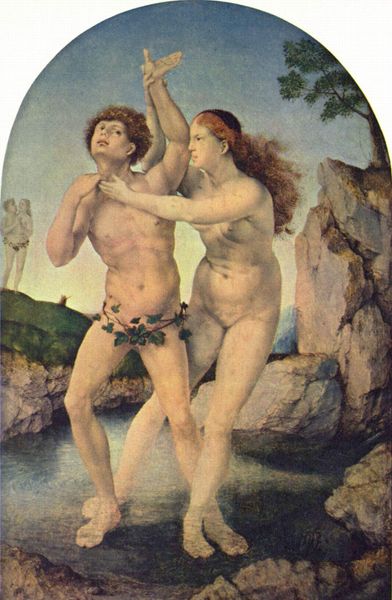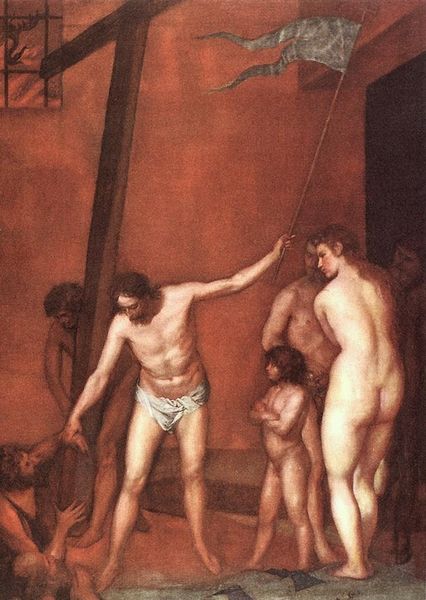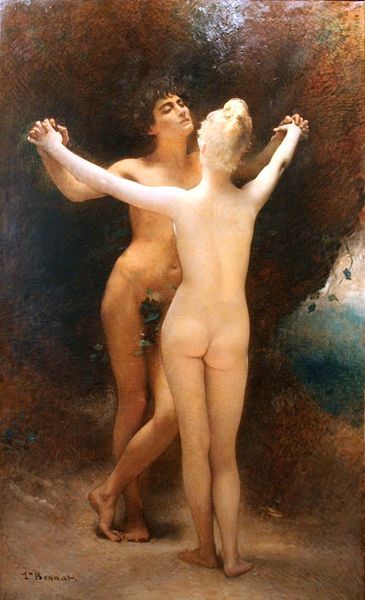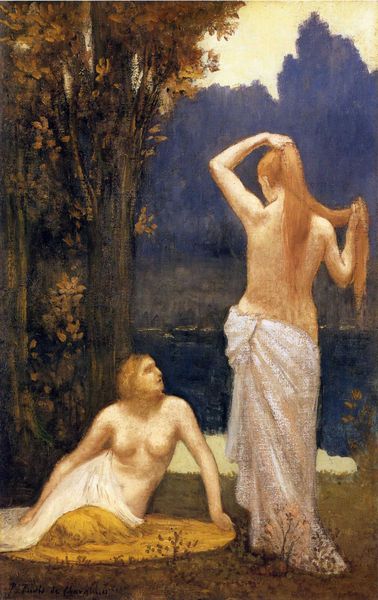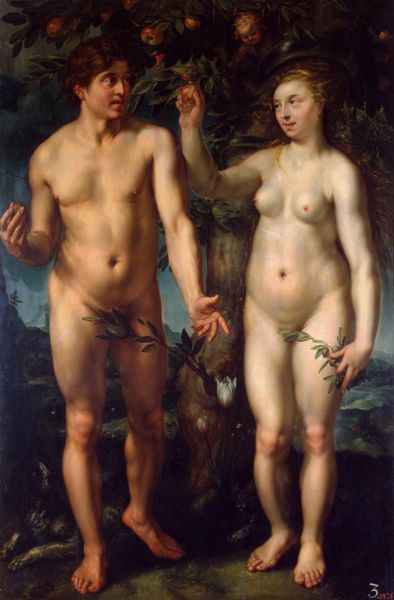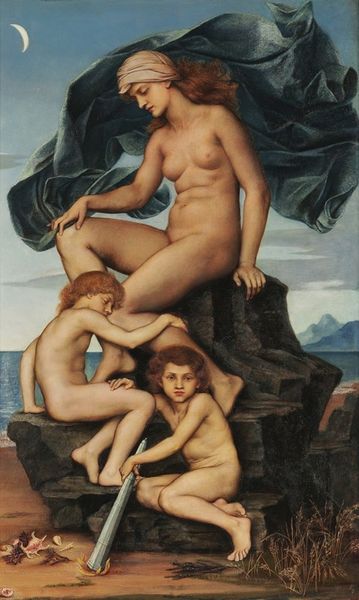
#
gouache
#
acrylic
#
charcoal drawing
#
possibly oil pastel
#
oil painting
#
acrylic on canvas
#
underpainting
#
painting painterly
#
charcoal
#
watercolor
Copyright: Public domain
Evelyn De Morgan created this oil painting, Phosphorus and Hesperus, during the late 19th and early 20th century in Britain, a period marked by significant shifts in social norms and the rise of the New Woman. The figures of Phosphorus and Hesperus, representing the morning and evening stars, are androgynous, challenging traditional gender roles and hinting at themes of spiritual harmony. De Morgan's work often reflects her spiritualist beliefs and interest in social reform. The painting's symbolism encourages us to consider the prevailing social structures of De Morgan's time, particularly the evolving roles of women and new forms of spiritual belief. Was she challenging the Victorian era's rigid expectations or reinforcing the established order through subtle, allegorical narratives? By examining archival material related to late 19th-century British art and social history, we can better understand how De Morgan's artistic choices engaged with the cultural debates of her era. The meaning of this painting lies in understanding the interplay of art, society, and institutional context.
Comments
No comments
Be the first to comment and join the conversation on the ultimate creative platform.
